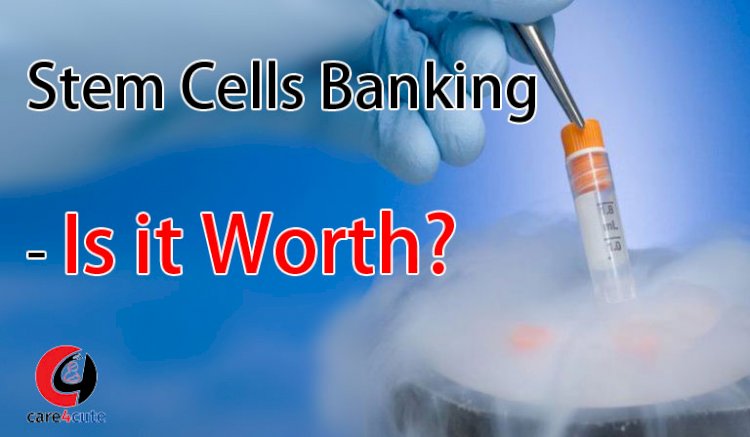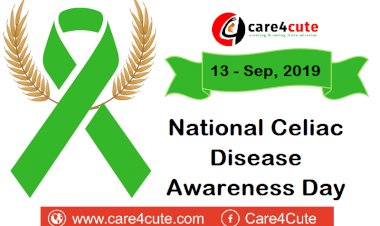Stem Cells Banking- Is it Worth?

Stem cell banking: Is it worth or not?
What Are Stem Cells:-
Stem cells are a type of raw material of our body. Stem cells have the ability to develop into all other kind of cells of body such as blood cells, brain cells, heart muscles or bone cells. No other cells in our body have this unique ability.
Now the question is where do stem cells come from? Researchers have discovered many sources of stem cells:
- Embryonic Stem Cells:- Those stem cells are derived from human embryo. These embryonic stem cells are called pluripotent which means they can generate more than 200 types of cells. This ability allows embryonic stem cells to regenerate or repair diseased tissue and organ.
- Adult Stem Cells:- There are two types of adult stem cells. One type comes from fully developed tissues like brain, skin, and bone marrow. But they are in limited numbers and they most likely develop one kind of cells. For example, a stem cell from liver will only generate liver cells.
Other type of adult stem cell is induced pluripotent stem cells that changed in a lab to be more likely embryonic stem cells. But these stem cells are under trials and not yet found one that can develop every kind of cell and tissue.
- Perinatal Stem Cells:- These stem cells are discovered from amniotic fluid as well as umbilical cord blood. These stem cells have ability to develop in specialized cells.
Stem Cell therapy:-
Stem cell therapy is the use of stem cells to treat or prevent a disease or condition. Stem cell therapy is also called regenerative medicine. Dysfunctional or injured tissues can be repaired using stem cells. It can be a replacement of organ transplantation as donor organs will always be in short supply .
Stem Cells in Medicine:-
Developed stem cells are manipulated in laboratory to some specialized specific cells like heart muscles cells, nerve cells or blood cells.
The specialized cells can now be implanted in a specific organ in the body . For example if a person has heart disease then the stem cells could be injected in the heart muscle. The healthy heart muscles cells derived from these stem cells will contribute in repairing defective heart muscles.
In the past stem cells has been used in treating many disease. Doctors have performed stem cells transplant. Stem cells replace cells damaged by chemotherapy or disease or serve like a donor’s immune system to fight cancer and blood related disease such as leukemia, lymphoma, neuroblastoma and multiple myeloma. These stem cell transplant need umbilical cord blood or adult stem cells.
The only stem cells now used to treat disease are hematopoietic stem cells. These are blood cell forming adult stem cells which are found in bone marrow. In the bone marrow each cells starts as a stem cells. These are immature cells and we can use them to make other blood cells that mature and function as we need.
These stem cells are being used in bone marrow transplantation and help people with cancer by making new blood cells. Researchers are testing stem cells for a number of diseases For example one day may be we can treat people with chronic heart disease, Type 1 diabetes, spinal cord injuries, Alzheimer disease and rheumatoid arthritis.
Stem Cell Banking: Is it worth or not?
Stem cell storage means the collection and cryopreservation of stem cells in umbilical cord blood and tissue for future. Stem cells can be stored for 25 years and there is no data available that cord blood can be stored more than that. However some scientists have reported that cord blood stem cells can be stored indefinitely. Storage can be private bank for the use of the individual baby and their family and or it can be public bank where anyone can use.
At public cord blood banks, a unit of stored cord blood has a greater chance of being used to help a sick child or used toward stem cell research. But private cord blood banks eventually throw away blood because a family no longer wants to store or use. One study says the chance that a child will use their cord blood over their lifetime is between 1 in 400 and 1 in 200,000.
In India there are 14 private banks and 2 public banks who offer different cost for preserving cord blood stem cells. In private bankcost starts at 17 thousand and then around 4 thousand per year. In the public bank its totally free of cost.
Lifecell is one of the india’s largest stem cell bank who have stored more then 70,000 cord blood units. Only 23 cord blood unit are utlilized till now. So the used data is very minimal and only 0.03%.
Now we talk about the treatment cost, if you give thousands of rupees in 10 years and stored stem cells for future use in any disease than the cost of treatment will be same as you get stem cells from a donor at the time of actual treatment.
Choose Private bank or public bank:-
Public Bank:-
If you make donation to a public bank then it will be available for anyone who needs it and you can’t reserve it for your family. but the public blood banking is free of cost.
If you choose to donate cord blood for public use, you should be aware that the blood will be tested for both genetic abnormalities and infectious diseases. If anything found, someone will notify you.
Private Core Blood Banking:-
In the private sector as you know nothing is free so collection and storage costs are very high and middle class or poor people can’t afford it. Also the chance of blood being used by your child is very low.
Stem cell transplant using an individual’s own cord blood (called an autologous transplant) can’t be used for few genetic disorders like sickle cell disease and thalassemia, because the genetic mutations which cause these disorders are present in the baby's cord blood. Other diseases that are treated with stem cell transplant, such as leukemia, may also already be present in a baby’s cord blood.
Now you can decide if you want to store your baby’s core blood stem cells or not. and if you decide to store it then which one is best for you –
private blood banking or public blood banking.




































Comments (0)